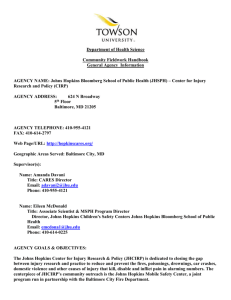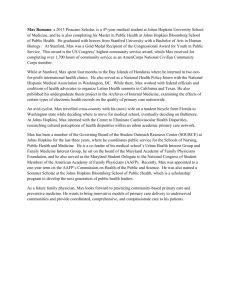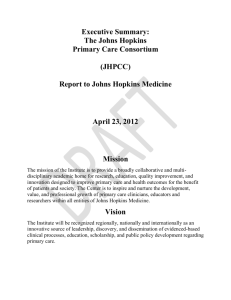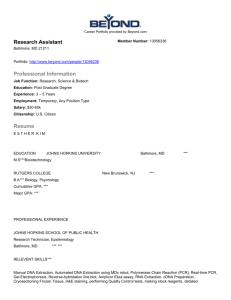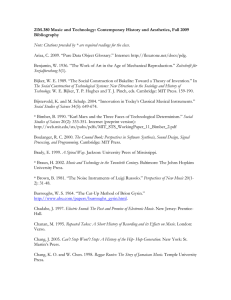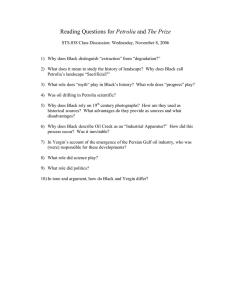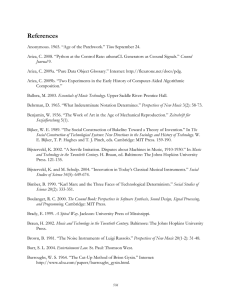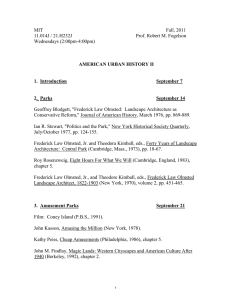SH1602
advertisement
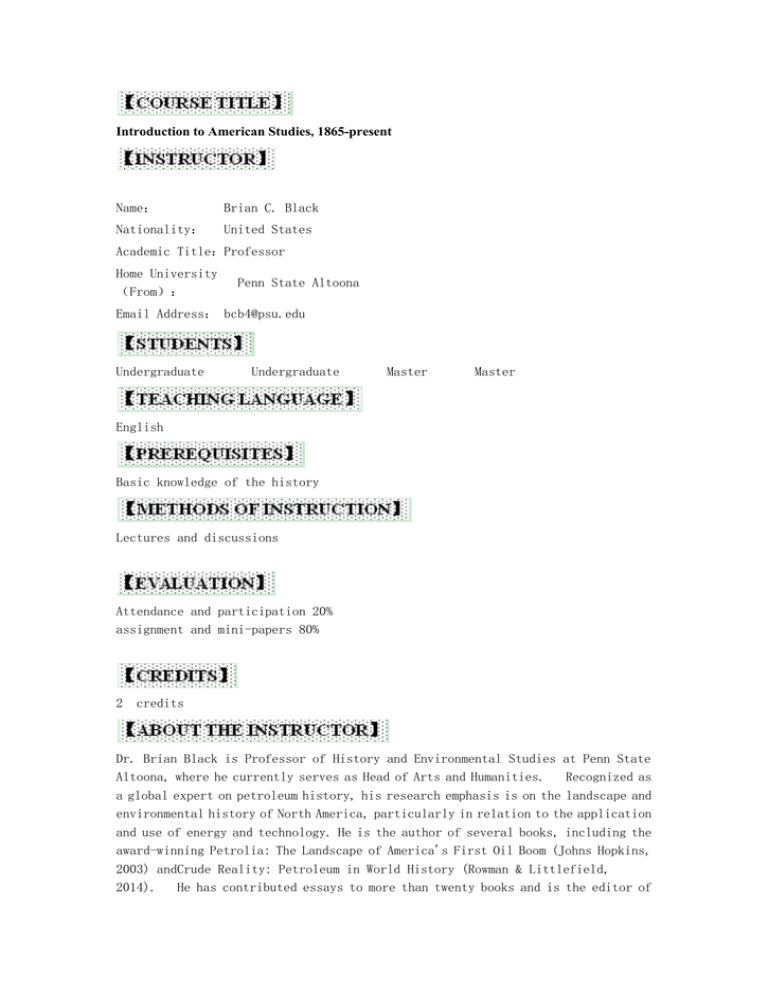
Introduction to American Studies, 1865-present Name: Brian C. Black Nationality: United States Academic Title:Professor Home University (From): Penn State Altoona Email Address: bcb4@psu.edu Undergraduate Undergraduate Master Master English Basic knowledge of the history Lectures and discussions Attendance and participation 20% assignment and mini-papers 80% 2 credits Dr. Brian Black is Professor of History and Environmental Studies at Penn State Altoona, where he currently serves as Head of Arts and Humanities. Recognized as a global expert on petroleum history, his research emphasis is on the landscape and environmental history of North America, particularly in relation to the application and use of energy and technology. He is the author of several books, including the award-winning Petrolia: The Landscape of America's First Oil Boom (Johns Hopkins, 2003) andCrude Reality: Petroleum in World History (Rowman & Littlefield, 2014). He has contributed essays to more than twenty books and is the editor of a number of others, including Nature’s Entrepot: Philadelphia's Urban Sphere and its Environmental Thresholds (University of Pittsburgh, 2012) and Climate Change, a four-volume encyclopedia (ABC-Clio, 2012). He also served as co-editor of the special issue of the Journal of American History on “Oil in American Life,” which was inspired by the 2010 Gulf Oil Spill and he is a former editor of Pennsylvania History. This course is designed to introduce students to the development of American culture from the Civil War to the present. It differs from ordinary survey courses in American history in two ways: 1) in addition to standard political and institutional sources used in many history courses, it concentrates on a wide variety of cultural expressions, including fiction, folklore, satire, art, poetry, music, maps, journals, trial transcripts, material culture, mass media, etc.,; and 2) it is episodic rather than comprehensive--that is, it focuses on representative events which are symbolic of the larger patterns of American national development. The thematic emphasis of the course will be on the term "culture"--both how a culture is perceived by others and how a culture perceives itself. The assumption is that American culture, like any culture, is multi-faceted and many-layered. Therefore, the assignments are designed to encourage an understanding of the "deep structure" of American life. To this end, a basic portion of the course is documentary analysis. The document analysis will be used as a foundation for Professor Black's lectures, so students will be able to compare their hypotheses with the themes developed in class. Students will not be judged on the degree to which they anticipate Professor Black's connections but on their ability to present plausible theories about the relatedness of the documents. In addition to these brief weekly document analyses, students are expected to attend class, to participate in discussion, to write two short papers (3-5 pages each), and to take a midterm exam and a final exam. Overall, the organization of the course will follow the chronology of American history, 1865-present. Chapter 1 American Culture and History 1:1INTRODUCTION: Culture and American Identity 1:2 CIVIL WAR 1:3Why study Popular culture? Questions andassignment: 1) How do we study the past? 2) Why does the past matter? 3) What is the significance of Civil War in American history? Chapter 2 Industrialization and Global Expansion in the early 20th Century 2:1Western Expansion,Modernization and the White City 2:2Amusing the Million: WW I and 1920s 2:3Harlem Renaissance and the Roaring 20s 2:4New Deal Questions andassignment: 1) How do new technologies change industrial America? 2) When do consumers become an important driver in American history? 3) How do ideas of race and ethnicity influence American culture? Chapter3: World War II Shapes the Consumer Nation 3:1 WW II &Conspicuous Consumption 3:21950s:Romantic Escapes and TV Narrative 3:3Electronic Hearth 3:4From Elvis to Woodstock to Hip Hopto Beyonce Questions andassignment: 1) Do ideas of gender and diversity change in American life? 2) What is the significance of middle class growth? 3) How are supplies of energy integral to this cultural change? Chapter 4 Shifting Eras 4:11970s: Vietnam and Energy Crisis 4:2Breaking Barriers 4:3Globalization and Beyond Questions andassignment: 1) How do crisis of 1970s influence American ideas 2) What contributes to the growth of environmental thought? 3) How does the role of the U.S. in the world change? Chapter 5Information Age:Reading Culture 5:1 Postmodern America and the election of Obama 5:2 Pop Culture Nation?:Reality TV and BeyondThe Information Age 5:2 Information technology and personal identity Questions andassignment: 1) What does Obama’s election mean to America? 2) How do American politics change as a result? 3) How does the role of the U.S. in the world change? 课程文件的 pdf 文档 Printout of PPT files for all the lectures will be made available in the very beginning of class. 1) Norton, People and a Nation, Vol. 2, 8th Edition 2) Addams, Twenty Years at Hull House 3) Bates, Long Shadow of Little Rock 4) Kovic, Born on the Fourth of July Andrews, Richard N.L. 1999.Managing the Environment, Managing Ourselves. New Haven: Yale University Press. Black, Brian. 2000. “Organic Planning: Ecology and Design in the Landscape of TVA.” In Environmentalism in Landscape Architecture, ed. Michel Conan. ———. 2000. Petrolia: The Landscape of America ’ s First Oil Boom. Baltimore, Md.: Johns Hopkins University Press. Bradsher, Keith. 2002. High and Mighty: SUVs: The World’s Most Dangerous Vehicles and How They Got That Way. NY: Public Affairs. Brennan, Timothy J., et al. 1996. A Shock to the System—Restructuring America’ s Electricity Industry. Washington, D.C.: Resources for the Future. Broder, J.M. 2007. “Rule to Expand Mountaintop Coal Mining,” The New York Times, August 23, 2007. Late Edition—Final, Section A, Page 1. Bruegmann, R. 2005. Sprawl: A Compact History. Chicago: University of Chicago Press. Brinkley, Douglas.2003. Wheels for the World: Henry Ford, His Company and a Century of Progress. New York: Viking. Brower, Michael. 1992. Cool Energy: Renewable Solutions to Environmental Problems, rev. ed. Cambridge, Mass.: MIT Press. Cooper, Gail. 2002. Air-Conditioning America . Baltimore: Johns Hopkins. Creese, Walter L. 1990. TVA’s Public Planning. Knoxville: University of Tennessee Press. Crosby, Alfred. 2006. Children of the Sun. New York: Norton. Melosi, Martin V. and Joseph A. Pratt. 2008. Energy Metropolis. Pittsburgh: University of Pittsburgh Press. Melosi, Martin. 1985. Coping with Abundance. New York: Knopf. ———. Sanitary City. 1999. Baltimore: Johns Hopkins University Press. Merchant, Carolyn. 2003.Major Problems in American Environmental History. New York: Heath. Mokyr, Joel. 1990.Twenty five centuries of technological change. New York : Harwood Academic Publishers. Mokyr, Joel, ed. 1985.The Economics of the Industrial Revolution.Totowa, NJ : Rowman & Allanheld. Montgomery, David. 2007. Dirt. Berkley: University of California Press. Montrie, Chad. 2003.To save the land and people: A history of opposition to surface coal mining in Appalachia. Chapel Hill: University of of North Carolina Press. Norton, Peter D. 2008.Fighting Traffic. Boston: MIT Press. Nye, David. 1984. Consuming Power . Boston: MIT Press. ———. 1996. Technological Sublime. Boston: MIT Press. ———. 1999. Electrifying America . Boston: MIT Press. .: Westview Press, 1994. ———. Energy in China’s Modernization: Advances and Limitations. Armonk, N.Y.: Stearns, Peter N. 1998.The Industrial Revolution in World History. Boulder, Colorado: Westview Press. Steinberg, Theodore. 1991. Nature Incorporated: Industrialization and the Water of New England. New York: Cambridge University Press. _______. 2006. American Green. New York: Norton. Stradling, David. 1999.Smokestacks and Progressives : Environmentalists, Engineers, and Air Quality in America, 1881–1951 . Baltimore: Johns Hopkins University Pre

